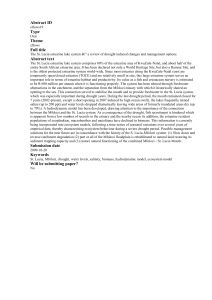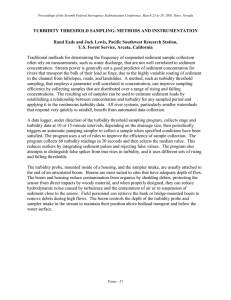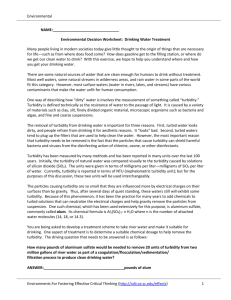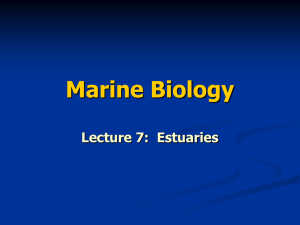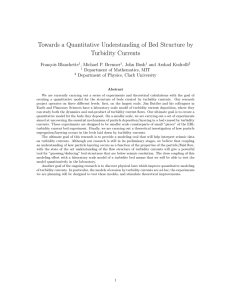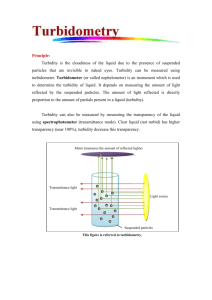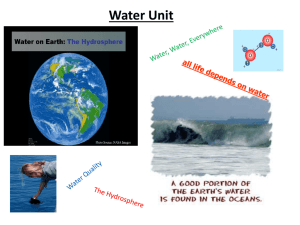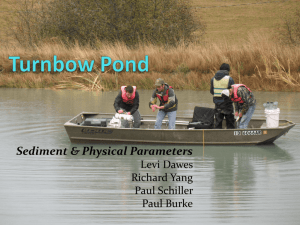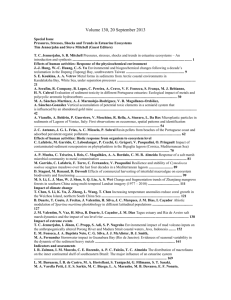Suspended Sediment Dynamics in the Columbia
advertisement
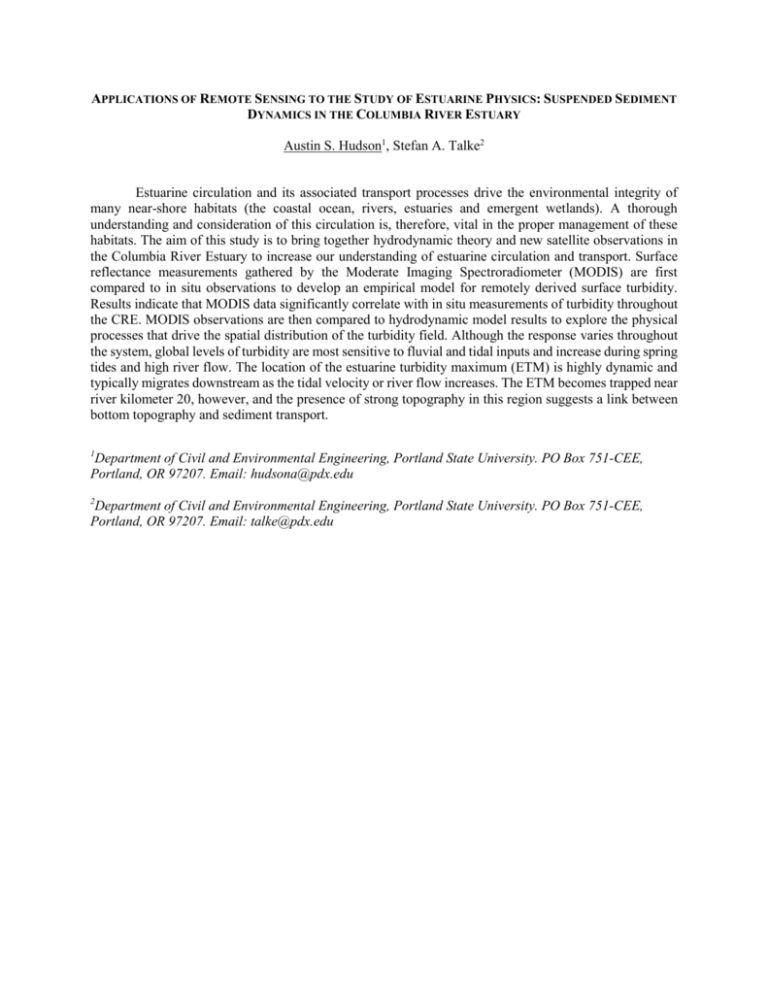
APPLICATIONS OF REMOTE SENSING TO THE STUDY OF ESTUARINE PHYSICS: SUSPENDED SEDIMENT DYNAMICS IN THE COLUMBIA RIVER ESTUARY Austin S. Hudson1, Stefan A. Talke2 Estuarine circulation and its associated transport processes drive the environmental integrity of many near-shore habitats (the coastal ocean, rivers, estuaries and emergent wetlands). A thorough understanding and consideration of this circulation is, therefore, vital in the proper management of these habitats. The aim of this study is to bring together hydrodynamic theory and new satellite observations in the Columbia River Estuary to increase our understanding of estuarine circulation and transport. Surface reflectance measurements gathered by the Moderate Imaging Spectroradiometer (MODIS) are first compared to in situ observations to develop an empirical model for remotely derived surface turbidity. Results indicate that MODIS data significantly correlate with in situ measurements of turbidity throughout the CRE. MODIS observations are then compared to hydrodynamic model results to explore the physical processes that drive the spatial distribution of the turbidity field. Although the response varies throughout the system, global levels of turbidity are most sensitive to fluvial and tidal inputs and increase during spring tides and high river flow. The location of the estuarine turbidity maximum (ETM) is highly dynamic and typically migrates downstream as the tidal velocity or river flow increases. The ETM becomes trapped near river kilometer 20, however, and the presence of strong topography in this region suggests a link between bottom topography and sediment transport. 1 Department of Civil and Environmental Engineering, Portland State University. PO Box 751-CEE, Portland, OR 97207. Email: hudsona@pdx.edu 2 Department of Civil and Environmental Engineering, Portland State University. PO Box 751-CEE, Portland, OR 97207. Email: talke@pdx.edu



